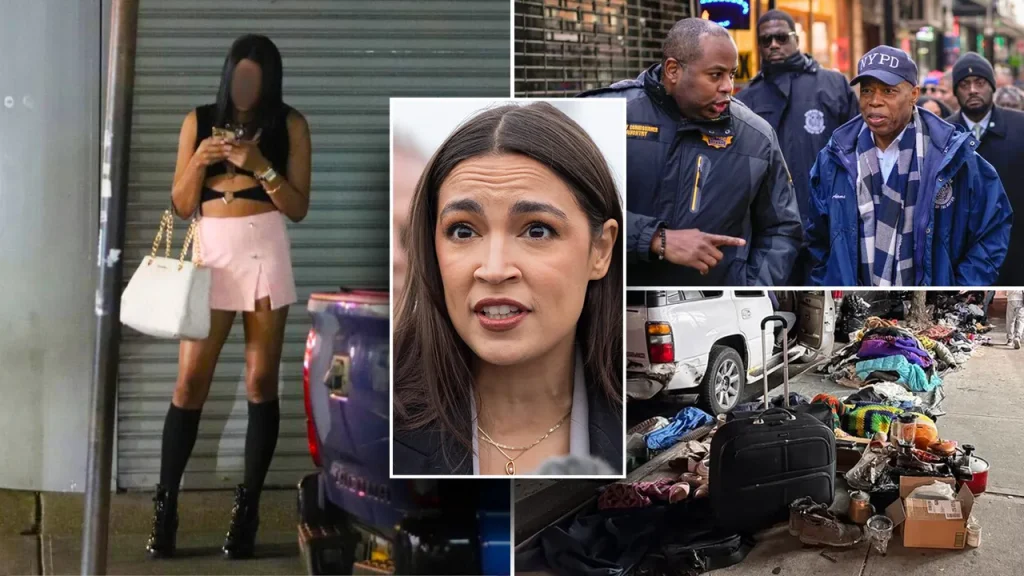A recent 90-day police operation in a Queens, New York neighborhood, represented by U.S. Representative Alexandria Ocasio-Cortez, has sparked a debate about policing strategies and their effectiveness in combating crime. The operation, dubbed “Operation Restore Roosevelt,” targeted a two-mile stretch of Roosevelt Avenue notorious for open-air prostitution, illegal vending, and other criminal activities. The increased police presence, which involved over 200 NYPD officers and state troopers, yielded nearly 1,000 arrests, numerous building inspections leading to vacate orders, the confiscation of illicit goods and vehicles, and a reported 25% decrease in crime. New York City Mayor Eric Adams championed the operation as evidence that a robust police presence is crucial for public safety, directly contradicting the “defund the police” movement advocated by figures like Rep. Ocasio-Cortez.
The initiative has drawn mixed reactions. While local residents and some activists have expressed relief at the improved safety conditions, concerns persist regarding the prevalence of serious crimes like human trafficking and gang activity. Mayor Adams and his administration have highlighted the operation’s success in addressing quality-of-life issues and restoring a sense of order to the community. They emphasized the importance of visible law enforcement in not only reducing crime but also fostering a sense of security among residents. However, critics argue that the operation merely addressed surface-level issues without tackling the root causes of crime, and that the focus on arrests and confiscations could disproportionately impact vulnerable populations like undocumented immigrants.
A key point of contention is Rep. Ocasio-Cortez’s apparent lack of involvement in the operation. Mayor Adams’ office claimed she had shown little interest and had not coordinated with the city administration’s efforts. While Rep. Ocasio-Cortez has not publicly commented on the operation, she has previously advocated for licensing street vendors, a stance that clashes with Mayor Adams’ focus on enforcement. This contrast highlights the ongoing debate about how best to address the complex issues of crime, economic hardship, and informal economies in urban areas. Rep. Grace Meng, who also represents the district, stated her office had been in contact with the local police precinct and was kept apprised of the situation by a local council member. She emphasized the importance of addressing quality-of-life and safety concerns.
Local Democrat politician Hiram Monserrate commended the operation as a repudiation of the “defund the police” model, while simultaneously emphasizing the need for further action, specifically targeting suspected brothels operating in the area. He criticized the notion of declaring victory while such establishments continue to operate, particularly near schools. He also claimed that local community groups had attempted to contact Rep. Ocasio-Cortez about their concerns but received no response. This reinforces the criticism of the representative’s perceived detachment from the issues affecting her constituents.
The situation in Queens illustrates the complex challenges facing urban communities and the often divergent approaches to addressing them. The “Operation Restore Roosevelt” case study raises important questions: Does increased police presence effectively deter crime or merely displace it? How can cities balance the need for public safety with the rights and needs of vulnerable populations, including undocumented immigrants and informal workers? What is the role of elected officials in addressing community concerns, and how can they effectively collaborate with different stakeholders to implement lasting solutions?
Ultimately, the debate surrounding “Operation Restore Roosevelt” extends beyond the immediate issues of crime and policing. It reflects broader societal discussions about the role of government, the allocation of resources, and the pursuit of equitable and sustainable urban development. The contrasting perspectives of Mayor Adams and Rep. Ocasio-Cortez represent two distinct visions for urban governance, highlighting the challenges of balancing competing priorities and finding common ground in the pursuit of safer and more prosperous communities. The long-term impact of the operation, and the lessons learned from it, will likely shape future policy decisions and community initiatives in Queens and beyond.

